Home > Digitized Walters Manuscripts
This document is a tranformation of a TEI P5 XML manuscript description incorporating images. If you have trouble reading special or non-Latin characters on this page, please make sure you have appropriate Unicode fonts installed and an up-to-date web browser.
Walters Ms. W.591, Book on logic
Browse images (Browse images in a new window) | TEI in XML format
W.591
Book on logic
Vernacular: نكات متعلقة بشرح المطالع وحواشيه الشريفة
As-written name: Muḥammad ibn Pīr Aḥmad al-shahīr bi-Ibn Arghūn al-Shīrāzī
Name, in vernacular: محمد بن بير احمد الشهير بابن ارغون الشيرازي
Known as: Ibn Arghūn al-Shīrāzī
Note: No information about this author is known.
The present work is a supergloss on the gloss (ḥāshiyah) by al-Sayyid al-Sharīf al-Jurjānī (d. 816 AH / 1413 CE) on the Lawāmiʿ al-asrār by Qutb al-Dīn al-Taḥtānī al-Rāzī (d. 766 AH / 1364 CE), being in turn a commentary on a book of logic entitled Maṭāliʿ al-anwār by Sirāj al-Dīn Maḥmūd al-Urmawī (d. 682 AH / 1283 CE). Written for the library of the Ottoman Sultan Selim I, it was completed in Bursa in 918 AH / 1512 CE, the year of that ruler's accession to the throne. The text, which opens with an illuminated headpiece (fol. 1b), is written in naskh script mostly in black ink with certain words, such as qawluhu and aqūlu, in red. It is possible that the scribe is also the author of this work. The brown goatskin binding with central lobed oval and pendants with arabesque designs is contemporary with the manuscript.
End of Shaʿbān 918 AH / 1512 CE
Būrsah (Bursa), Turkey
As-written name: Muḥammad ibn Pīr Aḥmad al-shahīr bi-Ibn Arghūn al-Shīrāzī
Name, in vernacular: محمد بن بير احمد الشهير بابن ارغون الشيرازي
Known as: Ibn Arghūn al-Shīrāzī
Book
Philosophical
The primary language in this manuscript is Arabic. The secondary language of this manuscript is Turkish, Ottoman (1500-1928).
- Transliteration: tamma wa-al-ḥamd li-Llāh awwalan wa--<ā>khiran wa-al-ṣalāh wa-al-salām ʿalá rasūlih Muḥammad /1/ wa-ālih wa-ṣaḥbih bāṭinan wa-ẓāhiran ʿalá anāmil afqar khalq Allāh wa-aḥwajihim /2/ Muḥammad ibn Pīr Aḥmad al-shahīr bi-Arghūn al-Shīrāzī ʿafá Allāh ʿanhumā fī <ā>akhir Shaʿbān /3/ li-sanat thamān ʿashar wa-tisʿimi<ʾ>ah al-hijrīyah bi-baldat [sic] /4/ al-ṭayyibah al-Būrsah ḥafiẓahā Allāh /5/ ʿan al-<ā>fāt /6/ tamma /7/
- Comment: Gives the name of the scribe, date, and place of copying
Paper
Laid paper
Foliation: i+84
Fols. 80-83 blank; main text ends on fol. 79a
Catchwords: On versos, written obliquely outside the frame close to the page edge
11.5 cm wide by 18.0 cm high
5.5 cm wide by 11.5 cm high
- Columns: 1
- Ruled lines: 17
- Framing lines in gold and black
- Title: Nikāt muta`allaqah bi-sharḥ al-Maṭāli` wa-ḥawāshih al-sharīfah
- Author: Muḥammad ibn Pīr Aḥmad al-shahīr bi-Ibn Arghūn al-Shīrāzī
- Scribe: Muḥammad ibn Pīr Aḥmad al-shahīr bi-Ibn Arghūn al-Shīrāzī
- Incipit: الحمد لله الذى اطلع شموس المطالب الكمالية من مطالع الانظار...
- Text note: Clean copy; no marginal corrections or glosses
- Hand note: Main text written in small naskh script mostly in black ink; certain words, such as qawluhu and aqūlu written in red or with extended horizontal strokes overlined in red; doxologicial formula (basmalah) inscribed in the headpiece on fol. 1b in white tawqī`script; part of the dedication on fol. 2a in gold riqāʿ script
- Decoration note: Illuminated headpiece inscribed with the doxological formula (basmalah) in tawqī script (fol. 1b); part of the dedication in gold riqāʿ script (fol. 2a); framing lines in gold and black
Upper board outside:
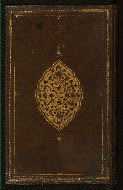
- Title: Binding
- Form: Binding
- Label: This brown goatskin binding with large lobed oval and pendants and gold decorative frames is contemporary with the manuscript, which is dated to 918 AH / 1512 CE.
fol. 1a:
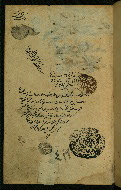
- Title: Page with former ownership notations and seals
- Form: Ownership notations; seals
- Label: This is the first page of the manuscript, inscribed with various ownership statements, seals of previous owners, and a bequest (waqf) entry.
fol. 1b:
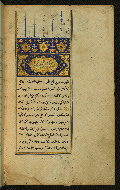
- Title: Illuminated incipit page with headpiece
- Form: Incipit; headpiece
- Text: Nikat muta`allaqah bi-sharh al-Matali` wa-hawashih al-sharifah
- Label: This incipit page has an illuminated headpiece with the doxological formula (basmalah) in the cartouche in white tawqī` script on a gold ground.
fol. 2a:
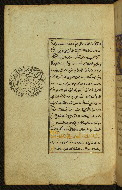
- Title: Text page with dedication to the Ottoman Sultan Selim I
- Form: Text page
- Text: Nikat muta`allaqah bi-sharh al-Matali` wa-hawashih al-sharifah
- Label: The line written in gold riqāʿ script on this page refers the Ottoman Sultan Selim I, to whom this work is dedicated. The bequest (waqf) seal of Bashīr Aghā, dated 1130 AH / 1717 CE, is at the left.
fol. 35a:
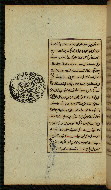
- Title: Text page with seal
- Form: Text page; seal
- Text: Nikat muta`allaqah bi-sharh al-Matali` wa-hawashih al-sharifah
- Label: This text page has the bequest (waqf) seal of Bashīr Aghā, dated 1130 AH / 1717 CE, at the left.
fol. 78a:
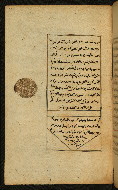
- Title: Explicit page with colophon
- Form: Explicit; colophon
- Text: Nikat muta`allaqah bi-sharh al-Matali` wa-hawashih al-sharifah
- Label: The final page of this manuscript ends with the colophon written within a triangular form.
fol. 79a:
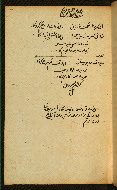
- Title: Notes in Ottoman Turkish and Arabic
- Form: Scribal notations
- Label: This page has inscribed notes in Ottoman Turkish and Arabic, the first one signed by Muḥammad Bahā’ī.
fol. 84a:
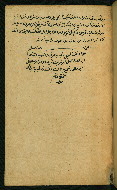
- Title: Page with autograph entry
- Form: Autograph entry
- Label: This page has a question-and-answer in Ottoman Turkish regarding pious requests, most probably by the jurist Abū al-Suʿūd Muḥammad ibn Muḥammad al-ʿImādī (d. 982 AH / 1574 CE).
- Comment:
For the jurist Abū al-Suʿūd Muḥammad ibn Muḥammad al-ʿImādī (d. 982 AH / 1574 CE), see GAL 2:579; S2:651, as noted in the bibliography.
The binding is original.
Brown goatskin (with flap); central lobed oval and pendants with arabesque designs on a gold ground and decorative frames; doublures of red leather with small central design and gold frame
[Ex libris] (min kutub) ʿIzzat [seal erased] (fol. 1a)
[Ex libris] ʿAbd al-Qādir (fol. 1a)
[Ex libris] Bashīr Aghā Dār al-Saʿādah, dated 1158 AH / 1745 CE [plus his seal] (fol. 1a, middle of the page); same seal also on fols. 32b and 78a
[Bequest entry (in Turkish nastaʿlīq script)] On behalf of Bashīr Aghā, in the hand of Muḥammad Amīn, inspector of awqāf [with his seal and the shelfmark 419, as well as the bequest (waqf) seal of al-Ḥājj Bashīr Aghā Dār al-Saʿādah, dated 1130 AH / 1717 CE] (fol.1a); same seal also present on fols. 2a, 35a, 52a, and 77b; shelf mark 419 also inscribed on the tail edge
Walters Art Museum, 1931, by Henry Walters bequest
For the main text and various commentaries and glosses see Brockelmann, Carl. Geschichte der arabischen Litteratur (New York; Köln: E.J. Brill, 1996), 1:614; S1: 848.
Principal cataloger: Gacek, Adam
Catalogers: Landau, Amy; Smith, Sita
Editor: Bockrath, Diane
Conservators: Jewell, Stephanie; Quandt, Abigail
Contributors: Barrera, Christina; Emery, Doug; Herbert, Lynley; Noel, William; Simpson, Shreve; Tabritha, Ariel; Toth, Michael B.; Valle, Chiara
The Walters Art Museum
Licensed for use under Creative Commons Attribution-NonCommercial-ShareAlike 3.0 Unported Access Rights, http://creativecommons.org/licenses/by-nc-sa/3.0/legalcode. It is requested that copies of any published articles based on the information in this data set be sent to the curator of manuscripts, The Walters Art Museum, 600 North Charles Street, Baltimore MD 21201.